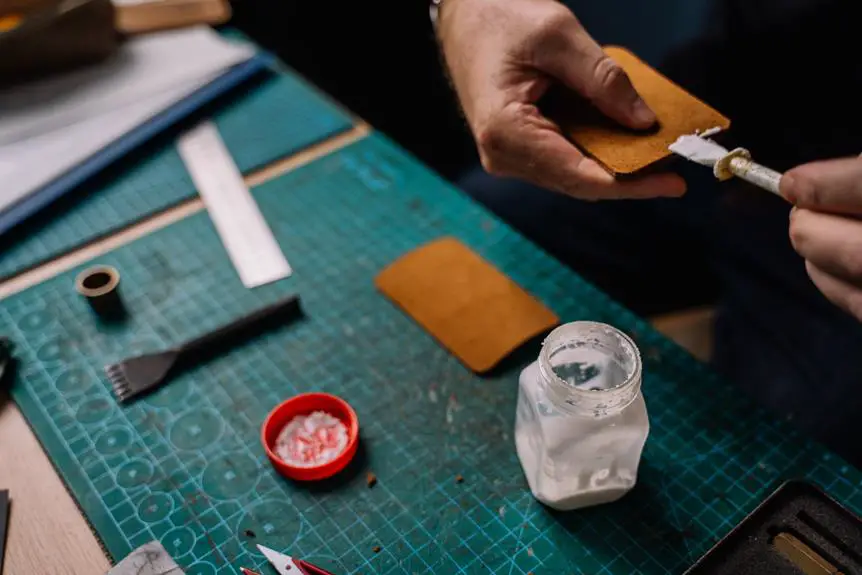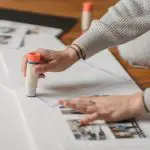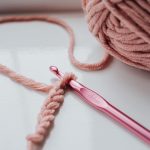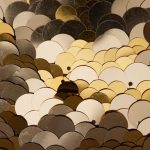So, you've heard about using wood glue for paper mache, and you're curious if it's really possible.
In this guide, we'll delve into the world of paper mache and wood glue, exploring its potential and limitations.
You'll gain insights into the science behind wood glue and how it can be harnessed for creating sturdy, long-lasting paper mache projects.
We'll discuss the practical aspects, from mixing the perfect consistency to testing its durability.
You'll also discover alternative applications and compare wood glue to traditional paste.
By the end, you'll have the knowledge and tips needed to achieve the results you desire with this unconventional paper mache method.
Key Takeaways
- Wood glue is a strong adhesive suitable for paper mache.
- Wood glue provides strength and durability for paper mache projects.
- Wood glue creates a strong bond between paper strips and forms a durable and long-lasting bond when dry.
- Wood glue offers cost-effective options for paper mache projects and is readily available at various stores and online retailers.
Understanding Wood Glue and Paper Mache
You can achieve a strong bond by combining wood glue and paper to create paper mache. Wood glue, also known as carpenter's glue, is an excellent choice for paper mache due to its strong adhesive properties. There are different types of wood glue, such as aliphatic resin glue, polyvinyl acetate (PVA) glue, and hide glue. Each type has its unique characteristics, making it suitable for various crafting projects.
In the realm of crafting, paper mache is a versatile medium that allows for the creation of intricate and durable objects. Wood glue serves as a reliable binding agent in paper mache, ensuring that the layers of paper form a sturdy composite material. This is particularly important when crafting items that require strength and durability, such as piñatas, masks, or decorative bowls.
Understanding the properties of different glue types empowers you to make informed decisions when embarking on crafting projects involving paper mache. By leveraging the strength and adhesive qualities of wood glue, you can bring your creative visions to life with confidence and precision.
Pros and Cons of Using Wood Glue
When it comes to using wood glue for paper mache, there are several factors to consider.
First, the strength and durability of wood glue can provide a solid structure for your project.
However, the longer drying time and potential inconsistency in application may be drawbacks to keep in mind.
Lastly, cost and availability of wood glue compared to traditional paper mache paste could also influence your decision.
Strength and Durability
One can achieve a good level of strength and durability when using wood glue for paper mache projects. Wood glue provides several benefits for creating paper mache, including excellent strength and durability for your finished piece. Here are some key points to consider:
- Strength: Wood glue creates a strong bond between the paper strips, ensuring that your paper mache project holds its shape and structure.
- Durability: When dry, wood glue forms a durable and long-lasting bond, making your paper mache creation sturdy and resilient.
- Durability Testing: Consider conducting durability testing on small-scale projects to understand the strength and longevity of wood glue in your specific application.
- Alternative Applications: Wood glue's strength and durability make it suitable for various crafts beyond paper mache, such as woodworking and model making.
Wood glue's strength and durability make it a reliable choice for your paper mache projects.
Drying Time and Consistency
Achieving the desired drying time and consistency with wood glue for paper mache projects is essential for successful results. To ensure optimal drying time and consistency, it's crucial to employ the right mixing techniques and adhere to the ideal ratio of wood glue to water.
When mixing the wood glue with water, aim for a smooth, lump-free consistency to achieve the best results. One of the advantages of using wood glue for paper mache is its relatively quick drying time, allowing you to proceed with the crafting process and apply finishing touches sooner.
However, it's important to note that the consistency of wood glue can vary based on factors like humidity and temperature, which can affect the overall drying time. By mastering the mixing techniques and understanding the ideal ratio, you can effectively leverage wood glue for your paper mache projects.
Cost and Availability
Wood glue offers cost-effective and widely available options for paper mache projects. When considering the cost and availability of wood glue for your paper mache needs, there are several factors to take into account:
- Affordability: Wood glue is often more budget-friendly than some specialized paper mache pastes.
- DIY alternatives: You can create your own paper mache paste using wood glue, saving on the cost of pre-made mixtures.
- Availability: Wood glue is readily available at hardware stores, supermarkets, and online retailers.
- Cost comparison: When comparing the cost of wood glue to other crafting options, it often proves to be a more economical choice.
- Crafting options: Wood glue can be used for a variety of crafting projects beyond just paper mache, making it a versatile and valuable investment.
Considering these points, wood glue presents a compelling case for both cost-effectiveness and availability in your paper mache endeavors.
Best Practices for Mixing Wood Glue
When mixing wood glue for paper mache, it's important to find the proper glue-to-water ratio to ensure the right consistency. This will affect how well the paper mache holds together and dries.
Understanding the drying and curing time is also crucial for achieving the best results with your wood glue paper mache project.
Proper Glue-To-Water Ratio
You can achieve the best paper mache results by mixing wood glue with water in a specific ratio. Proper dilution of wood glue with water is crucial for achieving the desired glue bonding and paper mache consistency.
Follow these best practices for mixing wood glue:
- Start with a 1:1 Ratio: Begin by mixing equal parts of wood glue and water to create a base mixture.
- Adjust for Thickness: Add more water for a thinner consistency or more wood glue for a thicker mixture, depending on your project's requirements.
- Mix Thoroughly: Ensure thorough mixing to achieve a smooth and uniform texture.
- Test for Consistency: Dip a strip of paper into the mixture to test the consistency before applying it to your project.
- Practice Patience: Allow the mixture to settle for a few minutes, and re-mix if necessary to achieve the perfect paper mache consistency.
Consistency for Paper Mache
To achieve the ideal consistency for paper mache when mixing wood glue, it is important to carefully adjust the ratio of wood glue to water. Achieving the right consistency ensures proper material compatibility and adhesive properties, which are essential for successful crafting techniques and artistic expression. Below is a table outlining the best practices for achieving the ideal consistency when mixing wood glue for paper mache:
| Wood Glue to Water Ratio | Consistency |
|---|---|
| 1:1 | Thick paste |
| 2:1 | Medium |
| 3:1 | Thin |
Carefully adjusting the ratio based on your specific project's requirements will help you achieve the perfect consistency for your paper mache, ensuring strong adhesion and a smooth crafting experience.
Drying and Curing Time
After mixing wood glue with water, allow the paper mache to dry for at least 24 hours before proceeding with additional layers or decorations. Proper drying and curing time are crucial for ensuring the strength and durability of your paper mache creation.
Here are some best practices for mixing wood glue to achieve the best results:
- Use a thin, even layer of the wood glue mixture for each application.
- Allow each layer to dry completely before adding the next one.
- Consider using a fan or a well-ventilated area to speed up the drying process.
- Be patient and avoid rushing the curing process to ensure optimal strength.
- Test the strength of the paper mache after the recommended curing time to ensure it meets your expectations.
Testing Durability and Longevity
Using wood glue to create paper mache results in a durable and long-lasting final product. To demonstrate the durability and longevity of paper mache made with wood glue, various tests were conducted, and a comparison with traditional flour-based paper mache was made. The results showed that wood glue-based paper mache exhibits superior durability and longevity compared to flour-based paper mache. Below is a comparison table outlining the findings:
| Aspect | Wood Glue Paper Mache | Flour-based Paper Mache |
|---|---|---|
| Durability | High | Low |
| Longevity | Long-lasting | Prone to deterioration |
| Strength | Sturdy | Fragile |
| Resistance to Moisture | Resistant | Absorbs moisture easily |
The durability testing involved various stress tests, including bending, compression, and moisture resistance. Wood glue-based paper mache consistently outperformed the flour-based counterpart in all these tests, demonstrating its robustness and ability to withstand various environmental factors. In terms of longevity, the wood glue-based paper mache showed minimal signs of deterioration even after prolonged exposure to moisture, while the flour-based paper mache exhibited significant weakening and deterioration. These results confirm that wood glue-based paper mache is a superior choice for creating durable and long-lasting artistic and craft projects.
Exploring Alternative Applications
Wondering how else wood glue-based paper mache can be utilized beyond traditional craft projects? Wood glue innovations open up a world of unique applications and creative possibilities.
Here are some alternative materials and innovative ways to use wood glue:
- Mixed Media Art: Combine wood glue with various materials like fabric, metal, or glass to create stunning mixed media art pieces.
- Sculpting: Use wood glue as a sculpting medium to create intricate sculptures and 3D art forms.
- Repair and Restoration: Utilize wood glue for repairing and restoring wooden furniture, decorative items, and antiques.
- Decorative Finishes: Experiment with wood glue to achieve unique decorative finishes on surfaces such as wood, canvas, or even walls.
- Model Making: Try using wood glue for model making and creating intricate architectural or miniature models.
Comparing Wood Glue to Traditional Paste
When comparing wood glue to traditional paste for paper mache projects, there are distinct differences in adhesive strength and drying time. Wood glue is known for its superior adhesive strength, forming a strong bond with the paper mache materials that can withstand the test of time. In contrast, traditional paste may not offer the same level of adhesion and longevity, making it more susceptible to deterioration over time.
In terms of application, wood glue offers greater flexibility. It has the ability to adhere to a variety of materials, including paper, fabric, and wood. This flexibility makes it a versatile choice for paper mache projects, allowing for smoother application and ensuring that the layers of paper mache adhere effectively to each other and to the base surface. On the other hand, traditional paste may have limitations in terms of its application and flexibility, potentially resulting in uneven adhesion and a less durable paper mache structure.
Tips for Achieving Desired Results
To ensure that you achieve the desired results when using wood glue for your paper mache projects, it's important to consider the following tips for maximizing adhesion and durability.
- Use a thin, even layer: Apply the wood glue evenly across the paper strips to ensure proper adhesion and prevent lumps or uneven drying.
- Allow for drying time: Give each layer of wood glue ample time to dry before adding the next layer. This helps in creating a strong and durable paper mache structure.
- Consider layering techniques: Experiment with different layering techniques to achieve the desired strength and texture for your crafting projects.
- Troubleshooting air bubbles: Smooth out any air bubbles that may form between the paper strips and wood glue to maintain a smooth surface.
- Seal and protect: Once the paper mache project is complete, consider sealing it with a clear sealant to protect it from moisture and enhance its longevity.
Frequently Asked Questions
Can Wood Glue Be Used for Paper Mache if I Have Allergies to Traditional Paste?
If you have allergies to traditional paste, wood glue can be an allergy-friendly alternative for paper mache. It offers different application techniques and potential durability concerns, making it a viable option for your needs.
Will Using Wood Glue for Paper Mache Result in a Smoother Finish Compared to Traditional Paste?
Yes, using wood glue for paper mache can result in a smoother finish compared to traditional paste. It also increases durability. If you have allergies to traditional paste, wood glue provides a viable alternative for your craft projects.
Are There Any Special Considerations for Using Wood Glue in Humid or Moist Environments?
When considering using wood glue for paper mache in moist environments, it's essential to account for potential issues like slower drying times. Additionally, be mindful of any allergies or sensitivities when working with wood glue.
Can Wood Glue Be Used for Paper Mache on Curved or Irregular Surfaces?
When using wood glue for paper mache on irregular surfaces, ensure it's water-resistant and dries clear. Always consider allergies when working with wood glue. It's crucial for a safe and successful project.
Is Wood Glue More or Less Cost-Effective Than Traditional Paste for Paper Mache Projects?
Wood glue can be more cost-effective than traditional paste for paper mache projects due to its durability. However, consider allergy concerns and health benefits when choosing between the two, as wood glue may contain allergens.
- The Art and History of Fabric Dyeing - July 24, 2024
- Influential Fabric Designers and Their Contributions - July 24, 2024
- Fabrics in Different Cultures: A Historical Perspective - July 24, 2024






